Notes
Major Embassy Terror Threat — and the Chance for the Pictures to Really Show Us Something (Sigh)
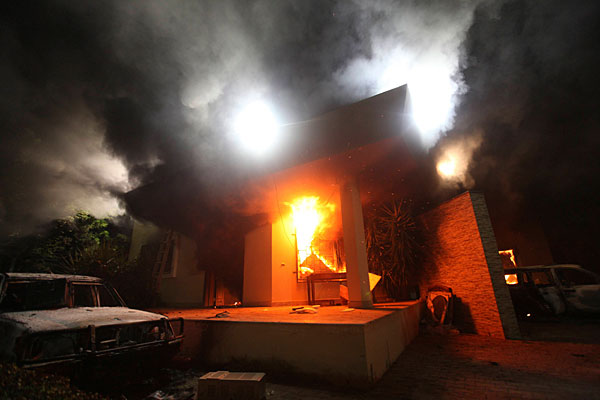
The decision certainly wasn’t trivial. The Administration decided to temporarily close 19 U.S. embassies in light of an intercepted al Qaeda message about a potential attack, most likely in the Middle East or North Africa. After the disaster in Benghazi turned into a political football, it’s no wonder Obama is playing it conservatively. What I was curious about, however, was how conservative or radical the media would play the story given the temptation to sensationalize or sow fear.
For photo editors tasked with the duty to illustrate this story, I should say that the majority of examples I looked at featured snapshots of the outside of the State Department or particular U.S. embassies (typically, documenting precautionary measures). That doesn’t mean that many publications didn’t tread further, however.
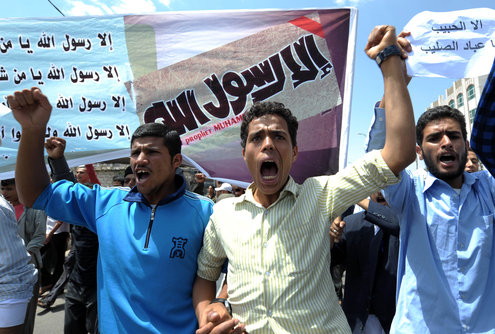
This photo McClatchy ran with its story — of an anti-U.S. protest outside the Yemen Embassy on Thursday — takes a potential al-Qaeda attack threat and generalizes it to the public, as if the story was really about a popular “death to America” uprising. It also crowns Yemen as the new central focus of the terror threat. (This shows up in post after post, this piece at HuffPo showcasing a military checkpoint.)
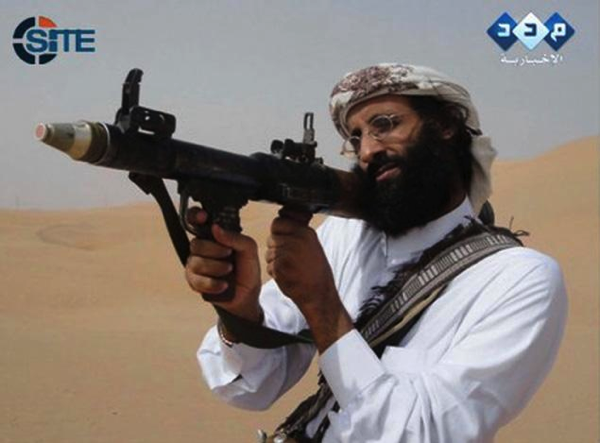
A National Post story titled “Western embassy closures across the Middle East show the war against al-Qaeda is far from over,” takes the opportunity to rekindle the semantics of the “war on terror.” In its article, The Post also offers up a rogue’s gallery, including images of: Umar Abdulmutallab, the kid recruited to carry explosives in his underwear; bin Laden; and, most ominously (that drone strike continuing to boomerang), former U.S. citizen, Anwar Al-Awlaki holding a shoulder- fired weapon in a video still.
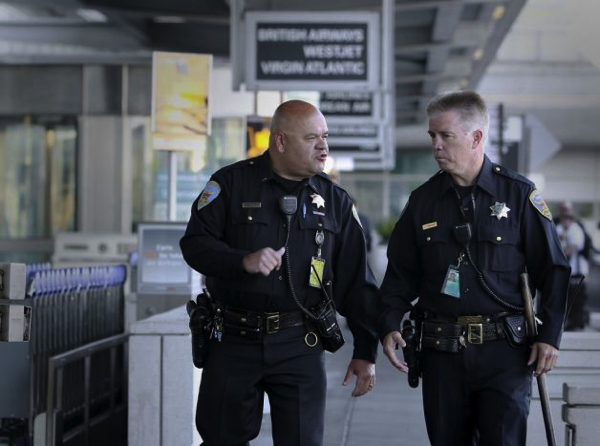
If they were just doing some local fishing, SFGate ends up conflating the overseas threat to the homeland, showing two SF cops on an airport shift, the photo actually taken two-and-a-half weeks ago. (But hey, whatever you can do to keep those security dollars and the anti-terror materiel flowing to local law enforcement, what’s the problem?) You might notice, by the way, how the gist of the SF article largely skips over the overseas warning to amplify “the potential for attacks on public transportation systems and other tourist infrastructure.”
It’s unclear, by the way, what this photo in a NY Daily News feature on the embassy closures accomplishes. I assume it’s a stock shot of an embassy (though don’t know which). At the same time, does it tend to associate the man, far right, with al Qaeda because of his dress?
It’s also interesting how many of these generic stories show pictures of the American embassy in Tel Aviv — such as this one from Reuters paired with this image — without any reference in the write-up as to why. Is this based on the assumption that Israel is that much higher value a target than an embassy in a Muslim country?
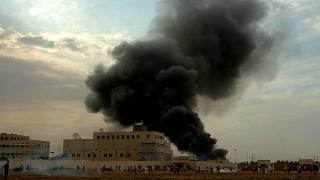
Of course, burning U.S. embassies were also a popular choice of many articles. Khartoum was a got-to option as the embassy there was one of many attacked last September during rioting against a U.S.-made video slandering Mohammed.
In their own grand tour (call it an play to the pyros), the NY Daily News also rustles up a collection of U.S. embassies on fire. On closer inspection, though, its seems the only facility actually physically touched was Ankara (above), seen, the photos from the U.S. Embassies in Cairo and Pakisan only showing fires set by protesters in the vicinity. What the News also does, however, replicated by many publications, is trot out a fiery photo of the lethal attack on the U.S. Consulate in Benghazi. (See image leading this post.) Is this photo fair game? If justifiable, it’s also true that attack images from Benghazi — particularly those with the flaming hot value of this one, Ambassador Stevens losing his life inside — also functions as a political dog whistle.
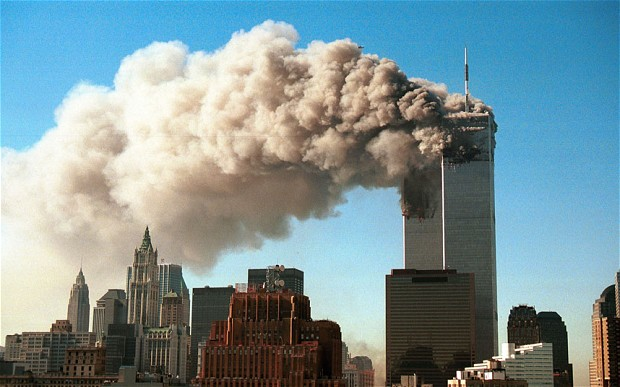
But then, taking the cake for the editing choice with absolutely no value or restraint, The Telegraph (also generalizing the overseas warning to the homeland) scrapes bottom with this 9/11 shot of the Trade towers. If the photo credit is technically correct:
The threat reporting seems reminiscent of the intelligence chatter that preceded the 9/11 attacks
it’s the most obvious and crass example of media playing the terror card. Beyond scare tactics and dog whistles, perfunctory shots of institutional buildings and generic preparations, however, these images fail in a different way.
What we count on photojournalism to do is inform, to provide us a snapshot of where we are and a window into where we’re going. Is the media so cowed by the government or so compromised by the politics that the images in the popular press never rise beyond the generic or advance beyond the Bush era? In that regard, where are the images detailing some workings, impact or even nuance of “the new al-Qaeda,” if the organization remains so vital? Or does the term function mostly as a nerve-wracked garbage bucket or umbrella? And what does this current threat actually look like? Who are the new or existing leaders — as distinct from just mugs of the military’s latest straw men? And is Yemen really the new center of the terrorist threat? What pictures actually show that? Is there imagery that represents al-Qaeda inroads in Syria or bases in Mali?
The imagery above is not good enough. It’s not just an opportunity to inform us, it’s an obligation.
(updated title and ending – 9:49 am PST)
(photo 1: Esam Al-Fetori/ Reuters. caption: The U.S. Consulate in Benghazi is seen in flames after being attacked on September 11, 2012. Four Americans were killed in the strike, including the U.S. Ambassador J. Christopher Stevens.photo 2: Mohammed Mohammed/MCT caption: Yemeni protesters shout slogans outside the U.S. Embassy in Sanaa, Yemen, on Thursday, September 13, 2012.. photo 3: AFP/Getty Images caption: Anwar Al-Awlaki, an imam from the United States, was killed in a targeted U.S. drone attack, one of over 250 such attacks authorized by U.S. President Barack Obama Obama.. photo 4: unattributed caption: In this file photo, Lt. Gaetano Caltagirone, (left) and Officer James Cunningham, walk the exterior of the International terminal as they start their early morning shift at SFO on Saturday July 13, 2013, in San Francisco, Calif. Officers throughout the Bay Area were on heightened alert Sunday, Aug. 4, 2013, following a global travel advisory. photo 5: Joel Sagett/AFP – Getty Photo photo 6: Nir Elias/Reuters. caption: A security personnel stands outside the U.S. embassy in Tel Aviv as pedestrians walk past August 4, 2013. photo 7: AFP caption: Smoke billows from the US embassy in Khartoum during a protest against an anti- Islam film last September. The US has issued a worldwide alert warning of a possible al-Qaida attack on tourist sites and infrastructure in the Middle East and North Africa. photo 8: Yavuz Ozden/Milliyet Daily Newspapers/Reuters. caption: A security officer runs after an explosion at the entrance of the U.S. embassy in Ankara, Turkey in February 1. The U.S. announced it would close its embassies in the the Mideast after a threat made by Al Qaeda. photo 9: Getty Images)

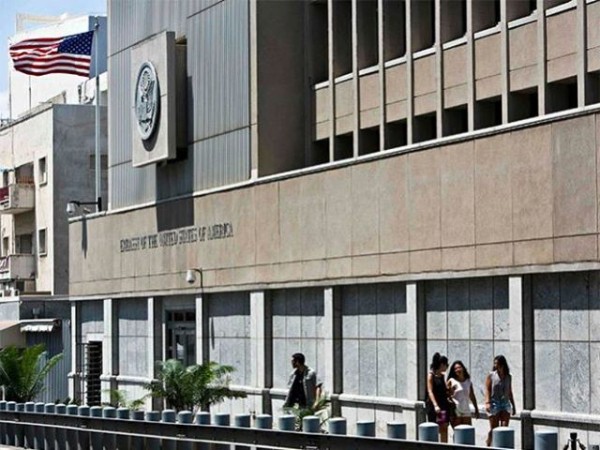
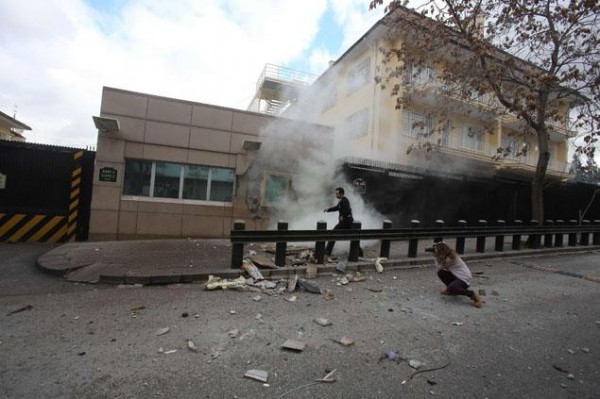
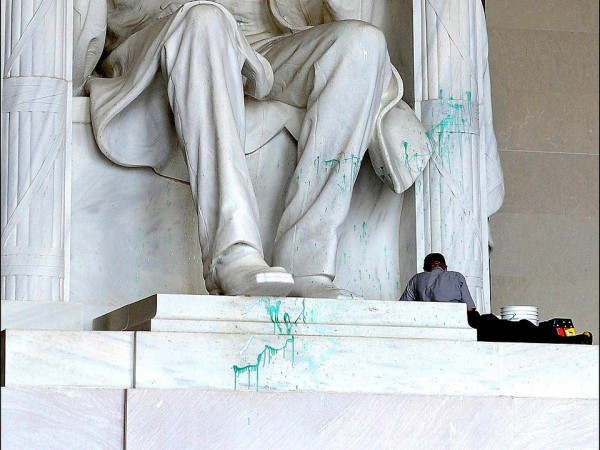
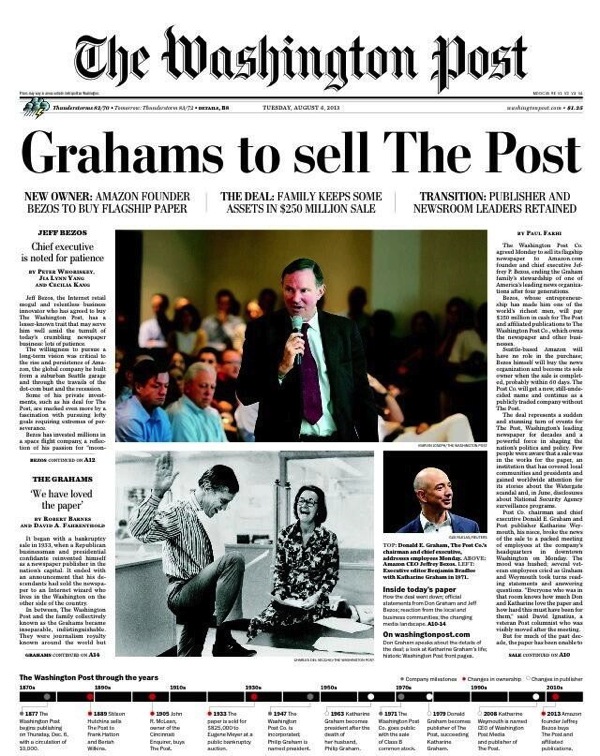
Reactions
Comments Powered by Disqus